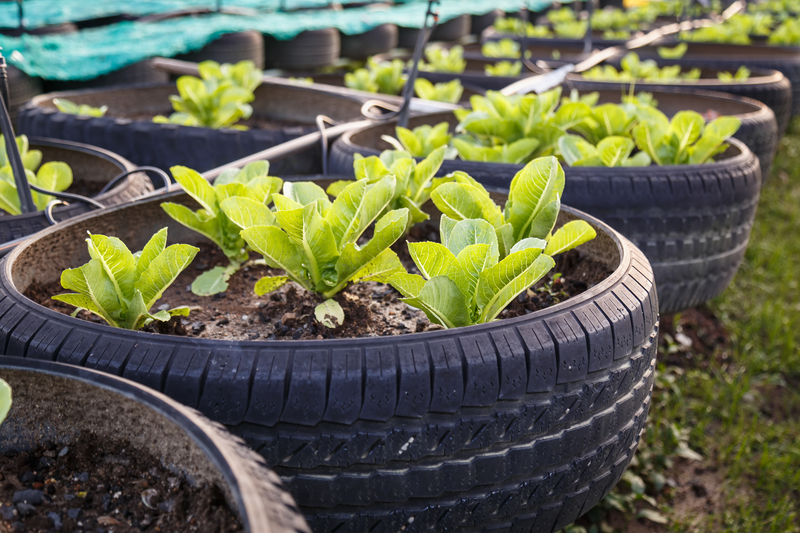How to Manage and Discard PPE Waste While Protecting Public Health
The surge in the use of personal protective equipment (PPE) such as masks, gloves, face shields, and gowns--fueled by the COVID-19 pandemic--has led to a staggering increase in PPE waste. Improper PPE waste management poses significant risks to public health and the environment. Hence, it is imperative to adopt robust strategies for handling, disposing, and recycling PPE materials. This comprehensive guide will explore how to manage and discard PPE waste while protecting public health and outline best practices, regulations, and the vital role that individuals and organizations play in this crucial process.
Understanding PPE Waste and Its Impact on Public Health
PPE waste includes discarded single-use and reusable items intended to reduce disease transmission, including masks, gloves, gowns, goggles, and more. As most PPE is made from non-biodegradable plastics such as polypropylene, their careless disposal contributes to environmental pollution and poses health hazards to both sanitation workers and the broader public.
- Public Health Hazard: Used PPE can harbor infectious pathogens, increasing the risk of disease spread if not properly handled.
- Environmental Impact: PPE does not readily decompose and can exacerbate plastic pollution in waterways and landfills.
- Occupational Risk: Improperly discarded PPE can endanger waste handlers and sanitation staff if they come into contact with contaminated materials.
The challenge lies in balancing effective disease control with the need for eco-friendly and safe PPE waste disposal. Addressing this challenge is essential to safeguard both public health and the planet.

The Importance of Proper PPE Waste Management
A robust PPE waste management system is essential for:
- Minimizing cross-contamination between individuals and environments.
- Protecting sanitation workers from possible infection and injury.
- Limiting environmental pollution from non-biodegradable plastics.
- Complying with local, national, and international waste management regulations.
PPE waste management encompasses every stage, from the initial point of use to the final mode of disposal or recycling. By understanding this process, both individuals and organizations can safeguard community health and the environment.
Guidelines for Safe PPE Waste Handling
For Households and Individuals
Individuals are the first line of defense in ensuring the safe disposal of used PPE, especially masks and gloves. Follow these essential tips:
- Do not litter: Never dispose of PPE on the ground, in streets, or parks. This may spread infections and pollute the environment.
- Segregate waste: Collect used PPE in a separate, designated bag--preferably a leak-proof, tightly closed plastic bag. Mark it clearly as 'PPE waste'.
- Sanitize before discarding: If feasible, lightly spray used PPE with household disinfectant before sealing the bag.
- Use proper bins: Discard sealed PPE bags in bins reserved for non-recyclable/residual/general waste; never in recycling bins, as PPE is not typically recyclable through household recycling schemes.
- Practice hand hygiene: Wash hands thoroughly after handling and disposing of used PPE.
By following these steps, you help prevent the risk of disease transmission and reduce environmental pollution from PPE waste.
For Workplaces, Healthcare Facilities, and Public Spaces
Organizations, especially in healthcare and public service sectors, are responsible for managing large volumes of PPE waste. Here are the key steps:
- Training staff: Ensure employees are trained on PPE disposal protocols, proper donning/doffing techniques, and waste handling.
- Providing PPE-specific bins: Place clearly labeled, pedal-operated or touch-free waste bins for disposal of masks, gloves, and gowns in strategic locations.
- Segregating at source: Classify PPE waste separately from recyclable and compostable waste streams.
- Safe collection and transport: Use robust and sealed containers for transportation to on-site or municipal waste handling facilities.
- Compliance with regulations: Adhere to all local and national regulations on medical and hazardous waste.
- Protecting waste workers: Equip waste handlers with appropriate PPE and training to avoid exposure to infectious material.
For facilities generating clinical or hazardous PPE waste, incineration or special treatment may be required to neutralize infectious agents before landfill disposal.
Effective Methods for PPE Waste Disposal
1. Sealed Bag Method
For non-infectious PPE waste (e.g., from homes or public use), the most common method is double-bagging: place PPE in a plastic bag, tie it securely, then place it in a second bag and tie again. This minimizes risks during handling and transportation.
2. Incineration
For infectious and hazardous PPE waste, especially from healthcare environments, high-temperature incineration (800-1200?C) is the most effective way to destroy pathogens and reduce waste volume. However, this method must be managed carefully to avoid toxic emissions.
3. Autoclaving
Autoclaving involves steam sterilization and is suitable for disinfecting PPE waste before disposal. This method is widely used in hospitals and laboratories.
4. Engineered Landfills
Properly managed sanitary landfills can safely contain non-infectious PPE waste. The waste must be securely bagged, and landfill sites should be regulated to prevent pollution and unauthorized access.
5. Pyrolysis and Chemical Treatment
Emerging technologies like pyrolysis (thermal decomposition without oxygen) and chemical treatment processes offer options to convert PPE waste into energy or inert products. These options may become more prevalent as PPE waste increases globally.
Best Practices for PPE Waste Management in Various Settings
Hospitals and Healthcare Facilities
- Strict segregation: Separate PPE waste from other medical and non-medical waste streams at the point of generation.
- Color-coded bins: Use international color codes (yellow or red) for infectious waste bins.
- Sharps Protocol: Dispose of damaged PPE containing sharps (needles, blades) in puncture-proof containers.
- On-site treatment: Deploy on-site autoclaves or incinerators where possible for immediate neutralization of hazardous waste.
- Documentation: Maintain records of PPE waste generation, transport, and disposal as per regulatory requirements.
Workplace and Commercial Buildings
- Staff awareness: Conduct regular training and signage to educate about proper PPE disposal.
- Dedicated bins: Place easily accessible PPE disposal stations at exits and high-traffic areas.
- Regular collection: Schedule frequent waste collection to prevent overflow and reduce contact risks.
- Disinfection: Clean and disinfect waste bins regularly to prevent secondary contamination.
Public Areas and Education Institutions
- Public messaging: Launch campaigns to educate about the dangers of improper PPE disposal.
- Bin accessibility: Ensure adequate coverage of clearly marked PPE waste bins.
- Monitoring: Assign staff or volunteers to monitor disposal practices and intervene where necessary.
Innovations and Sustainable Solutions for PPE Waste
The continued reliance on single-use PPE is driving innovation in sustainable alternatives and recycling methods. Exploring these options can help reduce environmental impact while safeguarding health.
Recycling Programs
- Specialized recycling: Programs are emerging to recycle masks and gloves into construction materials, furniture, or other plastic products. However, these require thorough disinfection and specialized facilities.
- Manufacturer take-back schemes: Some companies are piloting take-back programs to collect and recycle used PPE products.
Re-usable PPE
- Washable masks and gowns: Switching to re-usable PPE where appropriate reduces the volume of disposable waste. Follow strict cleaning and disinfection guidelines to ensure safety.
- Innovative materials: Researchers are developing biodegradable and compostable PPE made from natural fibers and sustainable plastics.
Regulatory Guidelines and International Standards
Proper PPE waste management must comply with established local, national, and global standards:
- WHO Recommendations: The World Health Organization outlines protocols for infectious waste, including PPE, emphasizing segregation, safe containment, and appropriate disposal.
- EPA and CDC Guidance: In the United States, the Environmental Protection Agency (EPA) and Centers for Disease Control and Prevention (CDC) provide regulatory frameworks for safe disposal of COVID-19 and medical wastes.
- Occupational Safety: OSHA mandates proper training and protections for workers handling hazardous waste, including PPE.
Stay updated with your local waste management authorities for current guidelines, as requirements may change based on the status of health emergencies.
The Role of Public Awareness in PPE Waste Reduction
A key strategy to minimize PPE waste hazards is through public education and engagement. Effective awareness campaigns help:
- Encourage responsible PPE use (using only what is necessary).
- Promote proper disposal behaviors, reducing littering and cross-contamination risks.
- Build support for recycling and reuse initiatives.
Social media, community organizations, and educational institutions can play vital roles in spreading information on PPE waste disposal best practices. Clear signage, tutorials, and community clean-ups can foster collective responsibility.
Key Tips for Safe PPE Waste Disposal
- Never flush PPE down toilets--this can block sewage systems and pollute waterways.
- Do not mix with recyclable materials--PPE can contaminate recycling streams.
- Report illegal dumping or improper disposal to local authorities to maintain public safety.
- Consider reusable options where applicable to reduce overall waste.
- Support community and regulatory efforts aimed at comprehensive PPE waste management.

Frequently Asked Questions (FAQs) on Managing PPE Waste
Can I recycle disposable masks and gloves with plastic bottles?
No. Disposable masks and gloves cannot be recycled with standard household plastics because they may be contaminated and are made from different materials. They must be disposed of as general or residual waste.
Is burning PPE waste at home safe?
Do not burn PPE at home. Home burning releases harmful toxins and increases fire hazards. Specialized facilities use high-temperature incineration with pollution controls.
What should I do if I find discarded PPE in public spaces?
Report it to the relevant public health or sanitation authority. If you must handle it, use gloves, place it in a sealed bag, and wash your hands thoroughly.
Conclusion: Safeguarding Health Through Responsible PPE Waste Handling
The management and disposal of PPE waste are more than logistical matters--they are essential practices to protect public health, preserve the environment, and strengthen communities. By understanding how to manage and discard PPE waste while protecting public health, individuals and organizations alike can play a proactive role in minimizing health risks and supporting sustainability.
- Be informed: Stay updated with local guidelines and best practices.
- Be careful: Always handle PPE waste with caution.
- Be responsible: Dispose of PPE waste correctly and encourage others to do the same.
As we continue to navigate the global challenges of infections and pandemics, responsible PPE waste management remains a fundamental part of protecting our health and our planet.
If you found this guide helpful, consider sharing it within your community to increase awareness about the importance of safe PPE waste disposal. Together, we can build a cleaner, healthier, and more resilient world.
